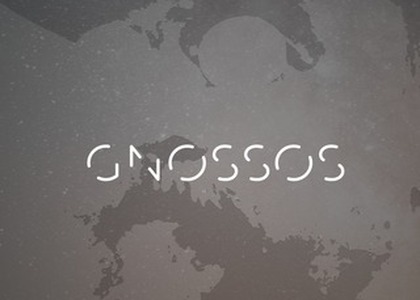> [Archived] Events

The launch of the GNOSSOS cultural project
On Saturday November 6th, at 18:00, the ISVOR Cultural Association launches the "GNOSSOS" project with a concert by the Imago Mundi ensemble. The concert will be hosted by the National University of Music of Bucharest (UNMB) in the Opera and Multimedia Hall (Str. Știrbei Vodă nr. 33, Sector 1, 010102 Bucharest) and is open to the public, subject to availability and health protection regulations.
"GNOSSOS" is a project of creative exploration of the work of French composer Erik Satie, based on his series of piano compositions entitled "Gnossiennes", written 130 years ago, and the doctoral thesis of Vasile Tomescu (PhD in musicology at Sorbonne University, Paris): "Histoire des relations musicales entre la France et la Roumanie - Des origines au commencement du XXe siècle", published in Paris in 1973.
Imago Mundi - Gnossos
The Imago Mundi Ensemble, known for its projects to re-evaluate traditional Romanian music from a contemporary perspective, aims to explore French Romanian-inspired creation from the late 19th century - made possible by the Universal Exhibition in Paris in 1889. The musical compositions, by Cătălin Ștefănescu-Pătrașcu, are visually commented by video projections mixed in real time, in a video performance with original images by Cristian Stănoiu.
Subsequently, the new music album Imago Mundi - Gnossos will be distributed online through the dedicated website (www.gnossos.imagomundi.ro) both in audio format and through a video-art production signed by Florin Ghenade and Irinel Cîrlănaru.
An educational project
"GNOSSOS" assumes an educational role by producing a series of 3 short presentation films / educational materials about the first 3 Gnossiennes, directed by pianist and composer Andrei Petrache. An approach to popularize classical music, the films offer a brief incursion into the life of composer Erik Satie, a concise presentation of the piano and basic technical notions.
Gnossiennes - interactive installation
Designed for a single user, the Gnossiennes interactive installation consists of a digital piano, a tablet, a pair of headphones and video projections. The video content signed by Cristian Stănoiu proposes, like the music, the symbolic crossing of a virtual bridge between Romania and France in search of Erik Satie.
The audio/video installation "Gnossiennes" will be open to the public for an interactive, immersive educational experience in the Atrium Hall of the French Institute of Romania in Bucharest (77 Dacia Boulevard) between the 18th and the 30th of November.
A triple-round project
This year marks the 155th anniversary of the birth of French composer Erik Satie.
At the same time, it is the 130th anniversary of the writing of the first three piano compositions in the series of works entitled "Gnossiennes" (1890/1891).
The Imago Mundi Ensemble celebrates its 20th anniversary this year.
Project team
The project team is composed of Imago Mundi (Oana Ivașcu - oboe; Cătălin Ștefănescu-Pătrașcu - compositions and orchestration, guitar, cobza; Daniel Ivașcu - percussion; Adrian Buciu - flutes; Ștefan Barbu - violin; Andreea Țimiraș - cello), Andrei Petrache - pianist and producer of educational materials, Oana Ivașcu - manager, Bogdan Vuluță, Andrei Barbu - musical direction and sound design, Florin Ghenade - photo/video artist (author photos, direction), Irinel Cîrlănaru - video artist (DOP, camera, editing, colour grading), Daniel Ivașcu - graphic & web designer, Adelina Mariș - communication and promotion, Cristina Istrate - financial responsible.
"Gnossos" is a cultural project organized by ISVOR Cultural Association and co-financed by the Administration of the National Cultural Fund (AFCN).
Learn more about Gnossos at www.gnossos.imagomundi.ro
About the projects of the ISVOR Cultural Association you can find out at www.isvor.ro
Translated by Denisa Dărăban,
University of Bucharest, Faculty of Foreign Languages and Literatures, MTTLC, year II
Corrected by Silvia Petrescu














